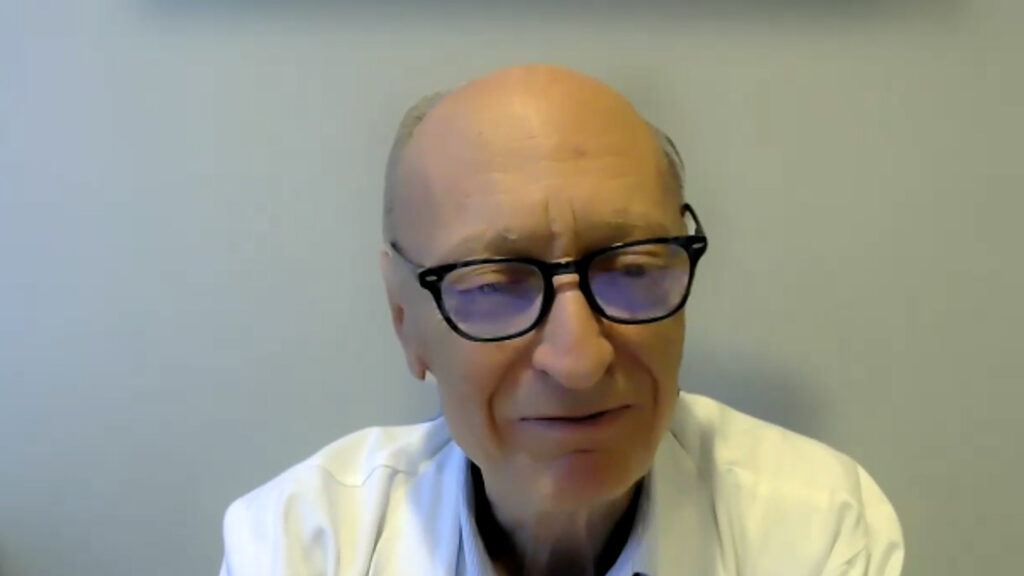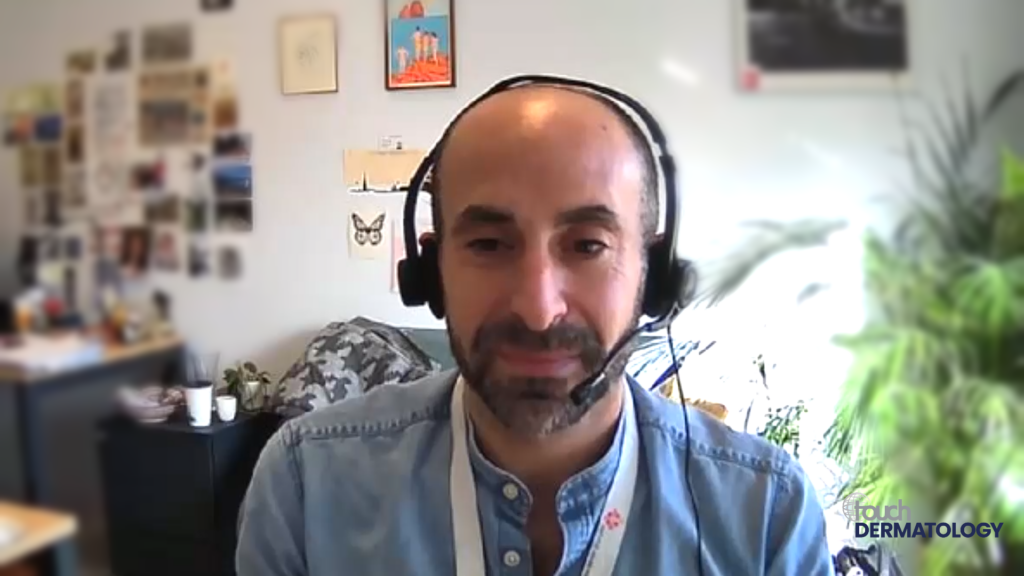Tumours that are positive for human epidermal growth factor receptor 2 (HER2) are found in about 15–20% of all breast cancers.1 HER2 positivity is associated with aggressive tumours that are often high grade, with increased rates of growth, early metastasis and have, historically, been associated with reduced survival compared with other subtypes.1 The introduction of HER2-targeted therapy transformed clinical outcomes in HER2-positive breast cancer. Since its approval in 1998, trastuzumab (Herceptin®, Roche, Basel, Switzerland), the humanised monoclonal antibody to the HER2 extracellular domain, has improved survival in both early and metastatic HER2-positive patients.2 Despite this, recurrence and disease progression continue to occur. Nearly 15% of patients relapse with distant disease within 12 months of treatment with trastuzumab.3 Pertuzumab (Perjeta®, Roche, Basel, Switzerland), a humanised monoclonal antibody to the HER2 transmembrane protein, has been shown to improve clinical responses in patients with HER2-positive breast cancer when administered in combination with trastuzumab and docetaxel.4 Patients who have no residual cancer at subsequent surgery following this treatment have a good prognosis with relatively low risk for recurrence. However, patients with residual invasive cancer have a much worse prognosis, with a higher risk for recurrence. Furthermore, de novo or acquired resistance to anti-HER2 therapy occurs in the vast majority of patients.5 There is a need for more effective therapies for this patient group.
Ado-trastuzumab emtansine (T-DM1, Kadcyla®, Genentech, South San Francisco, CA, US) is an antibody–drug conjugate of trastuzumab and the cytotoxic drug emtansine (DM1), a microtubule inhibitor.6 Results from several phase II studies have shown that T-DM1 is effective and safe in the treatment of patients with HER2-positive advanced or metastatic breast cancer.7 As a result, T-DM1 has received US Food and Drug Administration (FDA) approval for the treatment of patients with metastatic HER2-positive breast cancer following previous treatment with trastuzumab and a taxane type of chemotherapy.
The KATHERINE trial (ClinicalTrials.gov Identifier: NCT01772472) was a phase III, open-label study involving 1,486 patients with HER2-positive early breast cancer who were found to have residual invasive disease in the breast or axilla at surgery after receiving neoadjuvant chemotherapy that included a taxane and trastuzumab. Within 12 weeks of surgery, patients were randomly assigned to receive adjuvant T-DM1 or trastuzumab for 14 cycles.8 Interim results (median duration of follow-up was 41 months) were presented at the 2018 San Antonio Breast Cancer Symposium, which was held on Dec 4–8 2018, and simultaneously published in the New England Journal of Medicine.8,9 The risk of invasive disease or death was 50% lower in the T-DM1 group compared with the trastuzumab group (12.2% versus 22.2%; hazard ratio [HR] for invasive disease or death: 0.50; 95% confidence interval: 0.39–0.64; p<0.001). The estimated percentage of patients who were free of invasive disease at 3 years was 88.3% in the T-DM1 group and 77.0% in the trastuzumab group. Metastatic disease as the first invasive disease event occurred in 10.5% of patients in the T-DM1 group and 15.9% of those in the trastuzumab group. There was no impact on brain metastases.
One noteworthy finding was that these benefits were strikingly consistent across all subgroups including operable disease at presentation (HR, 0.47), inoperable disease at presentation (HR: 0.54), negative hormone receptor status (HR, 0.50), positive hormone receptor status (HR; 0.48), trastuzumab as the only anti-HER2 agent in the neoadjuvant setting (HR: 0.49), trastuzumab plus ≥1 anti-HER2 agent in the neoadjuvant setting (HR: 0.54), node-positive disease after neoadjuvant treatment (HR: 0.52), node-negative disease after neoadjuvant treatment (HR, 0.44), and baseline characteristics such as age, menopausal status, and ethnicity.8,9
Lead author Charles E Geyer, Jr, (MD, Professor of Medicine at Virginia Commonwealth University School of Medicine; Associate Director for Clinical Research and Harrigan, Haw, Luck Families Chair in Cancer Research at Massey Cancer Centre in Richmond, Virginia) commented “I believe these results will be practice-changing. The results should form the foundation of a new standard of care in patients with residual invasive breast cancer following neoadjuvant therapy. KATHERINE demonstrates that neoadjuvant therapy can be used to identify patients at increased risk for recurrence based on less than optimal response to standard neoadjuvant therapies who can benefit by switching to T-DM1.”10
The safety profile of T-DM1 in the KATHERINE trial was similar to that seen with T-DM1 in patients with metastatic disease.7 The rate of grade ≥3 adverse events (AEs) was 25.7% versus 15.4%, and the rate of serious AEs was 12.7% versus 8.1%, respectively. The AEs of severity grade 3 or higher included decreased platelet count (5.7% with T-DM1 versus 0.3% with trastuzumab), hypertension (2.0% versus 1.2%, respectively), peripheral sensory neuropathy (1.4% versus 0%), decreased neutrophil count (1.2% versus 0.7%), hypokalaemia (1.2% versus 0.1%), fatigue (1.1% versus 0.1%), and anaemia (1.1% versus 0.1%). Treatment discontinuation due to AEs occurred in 18.0% of the T-DM1 arm versus 2.1% in the trastuzumab arm.8,9
One limitation of the study was the decision to confirm positive HER2-status on the pre-treatment core biopsy of the primary tumour rather than on the residual tumour, according to Dr Geyer. “Paired specimens from over two-thirds of KATHERINE patients have been collected and further analysed to define the rate of HER2-loss in the post-surgical specimens and the activity of T-DM1 in these patients are planned,” he said. “The paired specimens will also facilitate further analyses to define potential resistance mechanisms to neoadjuvant chemotherapy and trastuzumab, as well as adjuvant T-DM1.”10
A minority of patients in the KATHERINE study (20%) received pertuzumab in the neoadjuvant setting before the start of the study. In a discussion after his presentation, Dr Geyer explained that he would switch patients from trastuzumab plus pertuzumab to T-DM1 in clinical practice. “Pertuzumab is becoming used more frequently. If you’ve used the 2 antibodies preoperatively, they tend to be carried postoperatively,” he said. “But [given] the fact that [T-DM1] has a 50% reduction in hazard versus trastuzumab, [it] is just very unlikely that pertuzumab could have that much benefit in this patient population.”9
Longer follow up is needed to determine the overall survival benefit with T-DM1. While the toxicity profile of T-DM1 is generally tolerable and manageable, the discontinuation rate is concerning and should be monitored over the long term. Nevertheless, these are important findings, and T-DM1 is likely to become the standard of care for patients with HER2-positive, early-stage breast cancer who receive chemotherapy and trastuzumab before surgery and have residual disease afterwards.
References
- SlamonDJ, Clark GM, Wong SG, et al. Human breast cancer: correlation of relapse and survival with amplification of the HER-2/neu oncogene. Science. 1987;235:177–82.
- Olson EM,NajitaJS, Sohl J, et al. Clinical outcomes and treatment practice patterns of patients with HER2-positive metastatic breast cancer in the post-trastuzumab era. Breast. 2013;22:525–31.
- MalyJJ, Macrae ER. Pertuzumab in combination with trastuzumab and chemotherapy in the treatment of HER2-positive metastatic breast cancer: safety, efficacy, and progression free survival. Breast Cancer (Auckl). 2014;8:81–8.
- Gianni L, Pienkowski T,ImYH, et al. Efficacy and safety of neoadjuvant pertuzumab and trastuzumab in women with locally advanced, inflammatory, or early HER2-positive breast cancer (NeoSphere): a randomised multicentre, open-label, phase 2 trial. Lancet Oncol. 2012;13:25–32.
- NahtaR, Yu D, Hung MC, et al. Mechanisms of disease: understanding resistance to HER2-targeted therapy in human breast cancer. Nat Clin Pract Oncol. 2006;3:269–80.
- PeddiPF, Hurvitz SA. Trastuzumab emtansine: the first targeted chemotherapy for treatment of breast cancer. Future Oncol. 2013;9:319–26.
- Yan H, Yu K, Zhang K, et al. Efficacy and safety of trastuzumab emtansine (T-DM1) in the treatment of HER2-positive metastatic breast cancer (MBC): a meta-analysis of randomized controlled trial.Oncotarget.2017;8:102458–67.
- vonMinckwitzG, Huang CS, Mano MS, et al. Trastuzumab emtansine for residual invasive HER2-positive breast cancer. N Engl J Med. 2019; 380:617–628.
- Geyer CE Jr, Huang C-S, Mano MS, et al. Phase III study of trastuzumab emtansine(T-DM1) vs trastuzumab as adjuvant therapy in patients with HER2-positive early breast cancer with residual invasive disease after neoadjuvant chemotherapy and HER2-targeted therapy including trastuzumab: Primary results from KATHERINE (NSABP B-50-I, GBG 77 and Roche BO27938). Presented at: 2018 San Antonio Breast Cancer Symposium, San Antonio, Texas, US, 4–8 December 2018.
- San Antonio Breast Cancer Symposium. Phase III KATHERINE clinical trial crossed early reporting boundary and met its primary endpoint. 2018. Available at: www.sabcs.org/sabcs/2018/pressreleases/1_u5c7feq9kywa_Phase%20III%20KATHERINE%20Clinical%20Trial%20Crossed%20Early%20Reporting%20Boundary%20and%20Met%20its%20Primary%20Endpoint.pdf(accessed 12 February 2019).












